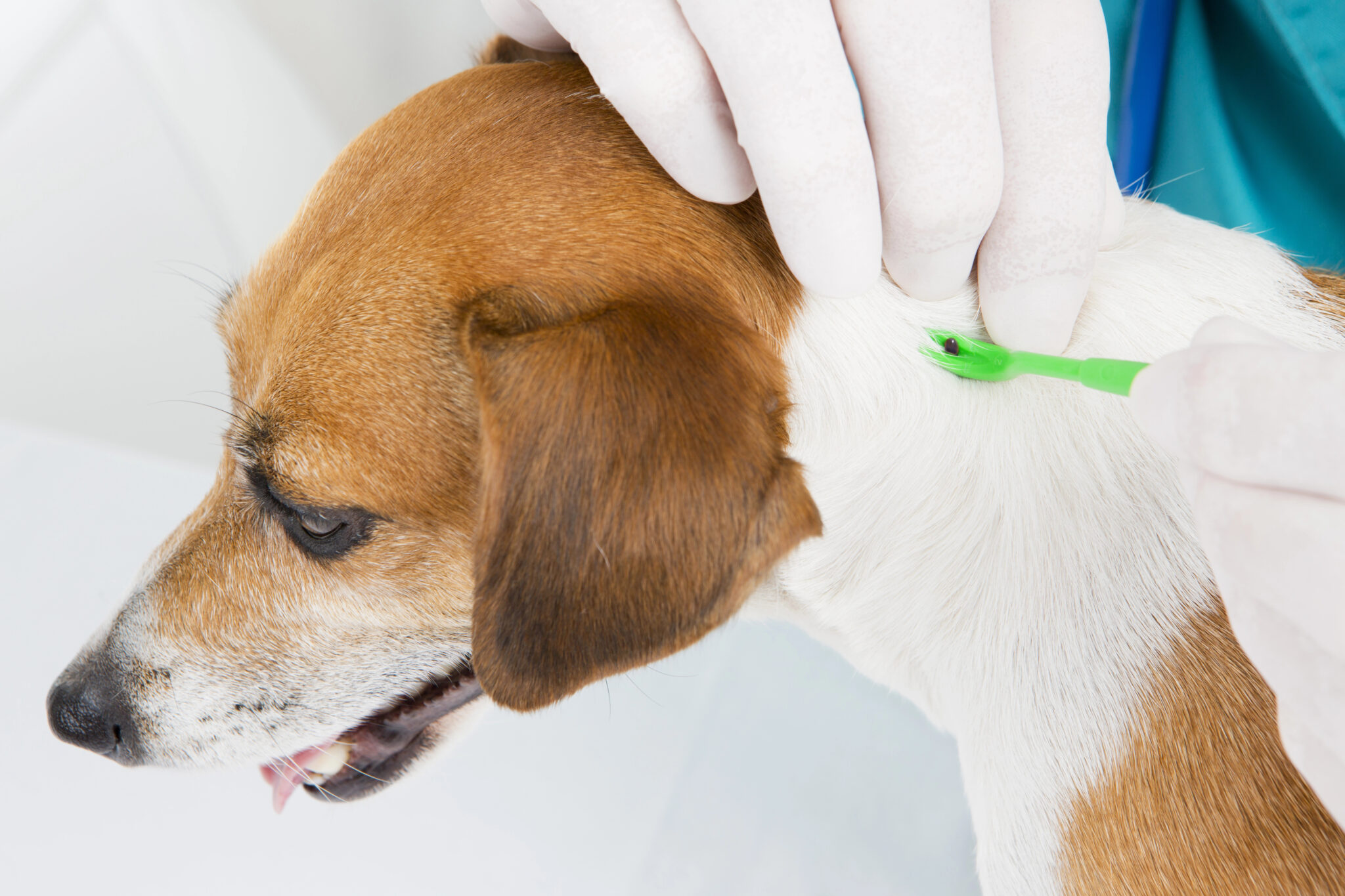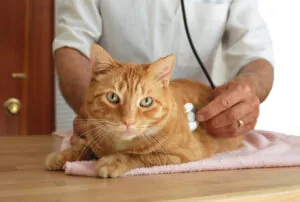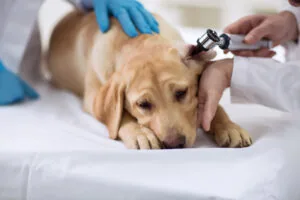Fleas and Ticks

Spring is here, the weather is nice, the flowers are blooming but it also means that the fleas and ticks are also here!
Fleas
Adult fleas are generally smaller than a sesame seed, who feed on the blood of animals. When a flea is on your pet they bite through the skin to suck up blood – in quantities of up to 15 times their body weight daily in the case of female cat fleas. If one flea finds your cat an attractive food source, you can be sure that other fleas will, too! They mate, with females laying 30-50 eggs per day. These eggs will drop to the ground within 8 hours and, as soon as 2 days later flea larvae will hatch and hide in dark places on the ground, in carpets or upholstery. After about a week of feeding on adult flea droppings, crumbs, flakes of skin, etc., the larvae spin cocoons to become pupae. The pupae can remain in this stage for very long periods. The cycle continues when, as soon as a week or so later, the pupae develop into adult fleas and emerge from their cocoons when they sense that a cat or dog, or another animal host, is near. The cycle – which can take as little as 12 days or as long as 180 days – can then begin again.
Ticks
Ticks are creatures that live exclusively on the blood of animals for three of the four stages of their life cycle. They crawl on and embed their mouth into the animal’s skin and proceed to suck up its blood. If you frequently visit tick-infested areas, you should inspect your pet daily for ticks, especially if they have been outside in areas where there is brush or tall grass. A thorough combing within 4 to 6 hours of exposure to such environments can help prevent ticks from attaching themselves to feast on your pet. Should you find a tick, it should be removed immediately, as the longer it is attached to its host, the greater the chance for paralysis. Use finger-nails, tweezers or a tick-removing device to grasp the tick as close to the dog or cat’s skin as possible and pull the tick out in one firm, steady motion. Always check if there is more than just one tick. To dispose of the tick, wrap it in several tissues and flush it down the toilet. Take your pet to the vet immediately if you are unable to remove the tick, if it is inaccessible, or if your dog or cat is showing any symptoms of tick paralysis. Early treatment is vital for their best chance of survival.
Common symptoms of fleas and ticks on dogs include:
- Droppings or “flea dirt” in a dog’s coat (small dark “grains of sand”)
- Flea eggs (tiny, white grains)
- Allergic dermatitis
- Excessive scratching, licking, or biting at skin
- Hair loss
- Scabs and hot spots
- Pale gums
- Tapeworms
Treatment/Prevention
The best way to control flea problems is to prevent them from happening in the first place. Fortunately, developments in veterinary parasite control in recent years have made the twofold goal of eliminating fleas on pets and preventing further infestations much easier to achieve. Available for both cats and dogs, new insecticides and insect growth regulators in easy-to-use topical or oral forms not only eliminate any existing fleas, but also work long-term to prevent future infestations. This is accomplished either by killing the parasites before they can reproduce or by preventing their eggs from developing into normal adult fleas. Consult your veterinarian for advice about the proper product for your pet. Furthermore, thorough daily vacuuming of high-traffic areas and frequent washing of your pet’s bedding will also go a long way in reducing the flea population in your home.
Examples of available products include the following:
- Topical flea products: Activyl®, Advantage® II, Cheristin®
- Oral flea products: Capstar®, Comfortis®, Sentinel® (growth regulator only)
- Topical tick products: Preventic® (dogs only)
- Topical combination products: Frontline®, K9 Advantix® II (dogs only), Bravecto®, Revolution®, Seresto® (collar), Vectra 3D® (dogs only), Effipro® Plus, Effitix® (dogs only)
- Oral combination products (dogs only): Bravecto®, NexGard®, Trifexis®, Simparica™
If despite your best efforts at control, you find that fleas or ticks have crawled (or jumped) onboard your pet, you will have to use a product that will kill and/or repel the parasites. Once again, you should ask your veterinarian for advice about what the most appropriate product for your pet is. And remember, it is perfectly normal to see live fleas or ticks on a pet immediately after a topical treatment, spray, shampoo, collar, etc. is applied. Many believe that this means the product is not working, but the fleas or ticks have to fully absorb the product before they will be affected, which may take a few hours to a few days.
Share This Post
Recent Posts
About Shallowford Animal Hospital
Shallowford Animal Hospital and The Pet Spa at Shallowford are dedicated to the exceptional, compassionate care your pet deserves. Pets hold a very special place in our families, and we treat yours like our own.



